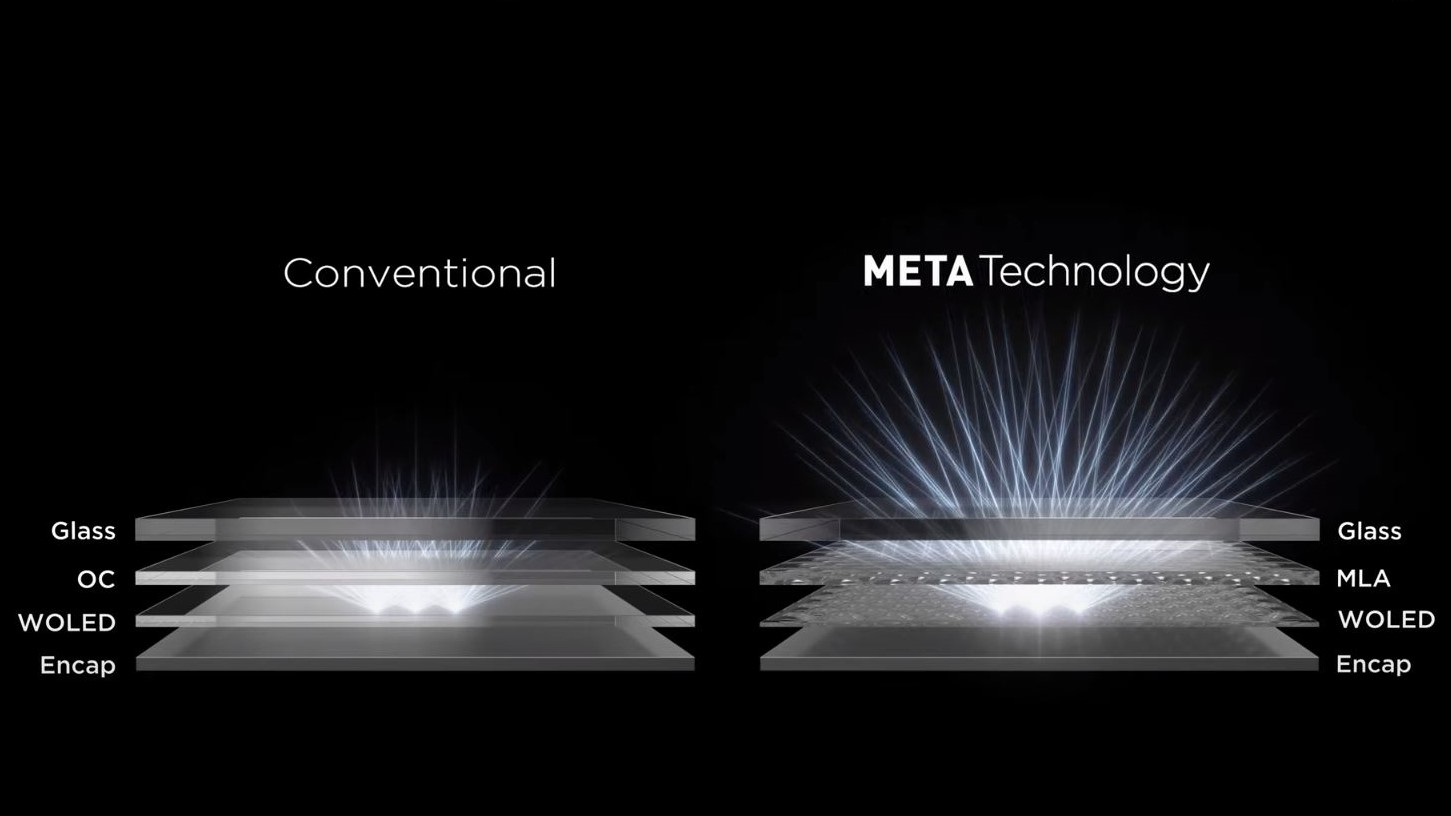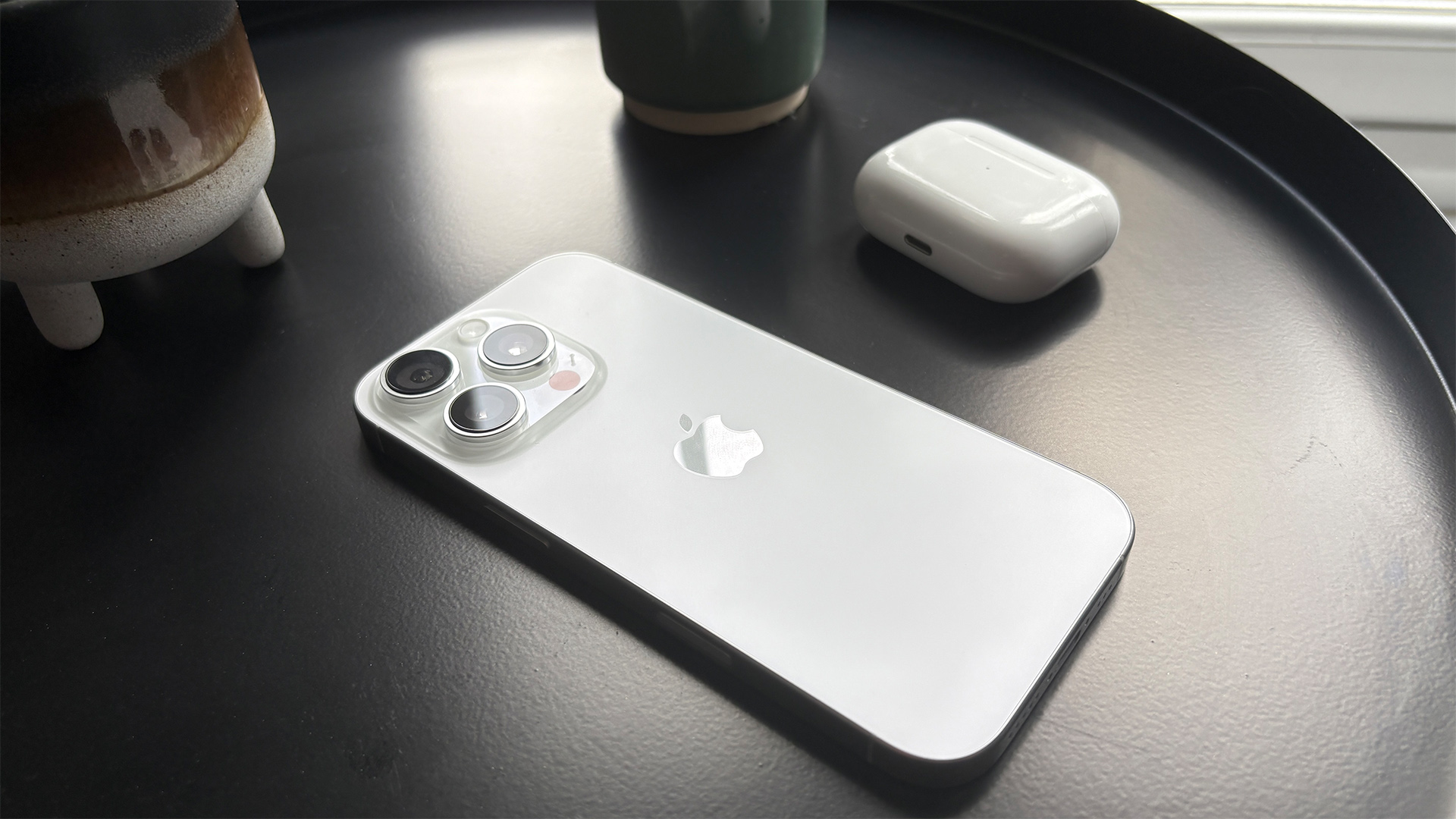I watched the same scene on a Sony A95K for 24 hours – now I’m desperate to see MLA
Our Bristol Hi-Fi Show QD-OLED vs OLED demo shows the future's bright for TVs

Last weekend I had the pleasure of running What Hi-Fi?’s demo on the final day of the Bristol Hi-Fi 2023 show.
And for those who missed it, what a demo it was. We pitted a Sony A95K QD-OLED against a Sony A80K OLED in a head-to-head shoot-out that really showcased the differences between the two TV panel technologies.
This saw me sit in our demo room with a constant stream of attendees, repeatedly running through three different demos from The Batman, Pan and Top Gun: Maverick, each designed to showcase how the panel technologies differ.
And, as well as feeling like I was stuck in a Groundhog Day-style time loop, the experience eventually led to a key crystallization in my head – I’m really excited about the new Micro Lens Array (MLA) sets coming out later this year.
I can’t tell you exactly which cycle of the demo my epiphany occurred, only that it was sometime later in the day during Pan.
In the Pan segment, we ran through three short scenes to showcase the difference in both sets’ pictures. In the first, we stopped the player at the point when a pirate ship sails through the sea on a bright sunny day. The second was when the same ship is flying through the air. The third showed the sun rising over a mountainous island floating in the sky.
In each, the differences were night and day clear. Running through the water, the ship’s sails looked great on both, but the QD-OLED had more vibrant reds and more contrast. In the air scene, the green glow of a rippling bubble of water floating in the sky was brighter and showcased a wider bloom of colours running from white to green on the QD-OLED. But, it was looking at the sun rising behind the mountain in the third that really blew my mind.
Get the What Hi-Fi? Newsletter
The latest hi-fi, home cinema and tech news, reviews, buying advice and deals, direct to your inbox.
On the OLED the sun was almost entirely white, with a thin aura of orange and red around it. But on the QD-OLED there was an entire range of colours, with a wide hue of orange through red surrounding a fiery white centre, adding a layer of rich detail missing on the standard OLED.

The reason for this is simple – the QD-OLED panel. To catch readers up, the A95K and A80K are in many ways very similar sets, featuring the same processor, presets and screen options. We picked them as the only real difference screen-wise is that the A95K uses a Samsung-made QD-OLED panel, while the A80K uses an LG OLED (technically a WOLED) panel.
This one difference is a big one. By now, most people are aware of the main benefits of OLED, and why OLEDs feature so heavily in our best TV guide. It creates pictures by individually charging each pixel, so one pixel can be black (uncharged), while the one directly adjacent can be pure white or a colour.
The downside is that OLED TVs can’t go as bright as the best LCD models, which charge the whole panel all the time. This is why LG added an extra white pixel to the traditional RGB configuration to create the WOLED panels that are used in TVs today. But even with this, they still can’t match the 2000-nit brightness of a top-end LCD. The Sony A80K has a maximum brightness of around 700 nits.
WOLED's white pixel can also impact colours when playing video at high brightnesses, so the brightest parts of the picture can look a little paler than they should.
QD-OLED is built by Samsung and aims to overcome this by combining its Quantum Dot technology with OLED. It works by using the OLED to create the blue part of the RGB and Quantum Dots for the red and green. The end result is that the QD-OLED panel seen on the A95K can go to a max brightness of around 1200 nits without needing the extra white pixel.
The reason this is important is illustrated particularly well by Pan, which is mastered at an astounding 4000 nits – well above what either set can currently do. The OLED panel’s lower max brightness is why details in the bright spots, such as the sun, were missing – anything beyond 700 nits, all it can do is white. There’s no higher range it can go to. Of course, the TV adapts the movie signal to match its peak brightness limitations (a common feature called Tone Mapping), but the fact remains that you're not quite seeing the source material as intended.
Now, you may ask why this made me think of MLA. The answer’s simple – the new TV tech can go even brighter. MLA was unveiled at the Consumer Electronics Show (CES) in January, and it’s set to debut on a number of this year’s new flagship TVs, including the Panasonic MZ2000, Philips OLED908 and LG G3.
You can get an in-depth breakdown of what MLA is and how it works in our guide, but the abbreviated version is that it is a layer of microscopic lenses that sits on top of the OLED pixels. Early reports are that MLA-boosted TVs should be capable of hitting peak brightness figures north of 2000 nits - a figure that should make it at the very least competitive with current and potentially the second generation QD-OLED panels set to appear on new TV's like the Samsung S95C.
So, by the logic I developed during our Pan demo, any TV with MLA could, in theory, show even more detail in bright scenes when running content mastered higher than 1200 nits. Though there isn’t oodles of content that meets this requirement yet, I still can’t help but be excited to see how it performs when we get the new sets in, having experienced the difference between QD-OLED and OLED at our Bristol Hi-Fi demo.
MORE:
These are the best OLED TVs we've tested
Check out our picks of the best 65-inch TVs currently available
Looking for a new telly to go with your PS5? These are the best gaming TVs we've reviewed

Alastair is What Hi-Fi?’s editor in chief. He has well over a decade’s experience as a journalist working in both B2C and B2B press. During this time he’s covered everything from the launch of the first Amazon Echo to government cyber security policy. Prior to joining What Hi-Fi? he served as Trusted Reviews’ editor-in-chief. Outside of tech, he has a Masters from King’s College London in Ethics and the Philosophy of Religion, is an enthusiastic, but untalented, guitar player and runs a webcomic in his spare time.
